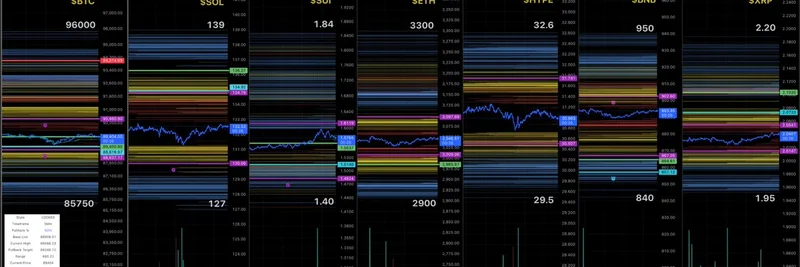In the fast-paced world of cryptocurrency, where meme tokens can skyrocket or crash overnight, discussions about market stability are crucial. A recent tweet from QwQiao, customer support lead at Alliance DAO and co-host of the Good Game Podcast, sheds light on a critical issue: the dangers of unchecked leverage in free markets. His post highlights how without proper regulations, crypto could be doomed to repeat the mistakes of traditional finance (often abbreviated as "tradfi").
QwQiao's tweet states: "in a free market the incentive is for marketplaces to offer as much leverage as possible at the lowest rate possible in order to stay competitive against each other. tardfi learned this lesson the hard way in 2008 and put in place strict regulations. without them we’ll be in perpetual cycles of extreme leverage contractions and expansions."
For those new to the term, leverage in trading means borrowing funds to amplify your position size. In crypto, especially with meme tokens, platforms like decentralized exchanges (DEXs) and perpetual futures markets allow traders to bet big with little capital—sometimes up to 100x or more. This can lead to massive gains but also devastating losses.
The Race to the Bottom in Crypto Leverage
QwQiao points out a key economic truth: in an unregulated environment, competition pushes platforms to offer higher leverage at cheaper rates. Why? Because traders flock to where they can maximize their potential returns. This "race to the bottom" mirrors what happened in traditional finance leading up to the 2008 global financial crisis.
Back then, banks and financial institutions offered subprime mortgages and complex derivatives with minimal oversight, fueling a housing bubble. When it burst, it triggered a worldwide recession. Regulators responded with measures like the Dodd-Frank Act in the US, imposing stricter capital requirements and risk controls.
In crypto, we're seeing similar patterns. Meme token traders on platforms like Solana-based DEXs or Binance futures often use high leverage to chase pumps. But when liquidations hit—forced sales due to margin calls—it creates cascading sell-offs, amplifying market volatility.
Lessons from Tradfi for Meme Tokens and DeFi
QwQiao's use of "tardfi" is likely a playful jab at "tradfi," emphasizing how slow traditional systems were to learn. Crypto, being younger and more agile, has the chance to avoid those pitfalls. Yet, without self-imposed or external regulations, we risk "perpetual cycles of extreme leverage contractions and expansions."
What does this mean for meme token enthusiasts? Tokens like DOGE or newer ones on Pump.fun thrive on hype and speculation. High leverage amplifies this, turning small trends into massive movements. But contractions—sudden deleveraging events—can wipe out billions in value, as seen in past crypto winters.
Projects in decentralized finance (DeFi) are experimenting with solutions. For instance, some protocols implement dynamic leverage caps based on market conditions, or require higher collateral for volatile assets. Organizations like Alliance DAO, where QwQiao works, support builders creating more sustainable ecosystems.
Why Regulations Could Stabilize Crypto Markets
Skeptics argue that regulations stifle innovation in blockchain. But QwQiao's insight suggests the opposite: smart rules could prevent boom-bust cycles, making crypto more attractive to institutional investors. Think about it—stable markets mean more participation, higher liquidity, and ultimately, better opportunities for meme tokens to evolve beyond pure speculation.
Globally, we're seeing moves in this direction. The EU's MiCA framework aims to regulate crypto assets, including stablecoins often used as collateral in leverage trading. In the US, discussions around clearer guidelines for DeFi continue post-FTX collapse.
For blockchain practitioners, understanding these dynamics is key. By learning from tradfi's history, we can build meme token ecosystems that are fun, profitable, and resilient.
The conversation sparked a simple agreement from user @KyoMemes: "yep." It seems many in the community recognize this risk. As meme tokens grow in popularity, keeping an eye on leverage practices will be essential for long-term success.
Stay informed with Meme Insider for more insights on meme tokens, DeFi trends, and blockchain innovations. If you're diving into leverage trading, always DYOR (do your own research) and consider risk management strategies to navigate these volatile waters.

